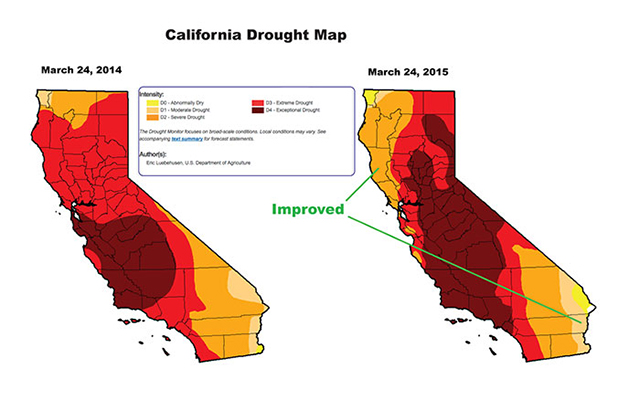California is looking towards desalinization to address its water shortage:
Now, for the first time, a major California metropolis is on the verge of turning the Pacific Ocean into an everyday source of drinking water. A $1 billion desalination plant to supply booming San Diego County is under construction here and due to open as early as November, providing a major test of whether California cities will be able to resort to the ocean to solve their water woes.This is part of a larger trend:
This trend shouldn't be viewed in isolation, but rather as part of a broad suite of high-tech, high-capital, energy intensive solutions -- or "solutions" -- to environmental problems created or (more often) intensified by population growth and climate change.Across the Sun Belt, a technology once dismissed as too expensive and harmful to the environment is getting a second look. Texas, facing persistent dry conditions and a population influx, may build several ocean desalination plants. Florida has one operating already and may be forced to build others as a rising sea invades the state’s freshwater supplies.In California, small ocean desalination plants are up and running in a handful of towns. Plans are far along for a large plant in Huntington Beach that would supply water to populous Orange County. A mothballed plant in Santa Barbara may soon be reactivated. And more than a dozen communities along the California coast are studying the issue.
Other examples include the vertical farming movement (a more recent write-up is here) and the increasing reliance of sky resorts on snow machines. Global consumption of air conditioning is rising rapidly and the latent demand for it is already vast.
 |
| Source |
But while a society that is increasingly dependent on such devices is in the short term more robust, it is in the longer term more fragile. The more you rely on energy-intensive, technologically sophisticated "solutions" to maintain reliable supplies of things as basic to human survival as food and water, the more vulnerable said society is to disruptions that may compromise those work-arounds.
While a society with desalinized drinking water is more resistant to drought, it is only so as long as the power in on, and the engineers come to work, and the spare parts are in supply. Lose that, whether to extreme weather, or war, or terrorism, or some other disruptive force -- and in addition to your other problems you will be very thirsty, very quickly.
We already live in a technological society, of course. I'm under no illusions that we would be able to feed seven billion people without the factories that produce fertilizer or the trucks and ships which move those fertilizers to the farm or the food to the market. Technological dependence exists along a spectrum. Things like desalinization move us further along that spectrum [1]. So while we store up more climate stresses for the society of nine billion people who will be confronting them at mid-century, we are also bequeathing to them an infrastructure which will be more vulnerable to catastrophic collapse -- a tall tower built taller even as the winds begin to howl.
-----------------------------------------
1. This is especially concerning when we push ourselves down that spectrum for no good reason, and desalinization in California is a perfect example of this. In California, as in most other places, the lion's share of the water -- more than three-quarters of it -- is used by agriculture. But when Gov Jerry Brown announced his emergency plan to save water across the state, he asked virtually nothing from the agriculture sector:
Brown's seven-page executive order, issued Wednesday, outlined the first statewide mandatory water use restrictions in California's history.
Among them: He ordered a 25% reduction in urban use statewide compared to 2013 levels. The directive also bans the use of drinking water to irrigate median strips in public roads, initiates the removal of 1,150 football fields worth of grass to be replaced with drought-tolerant plants; and orders golf courses, campuses and cemeteries to significantly cut their water consumption.
Agricultural mandates were fewer and milder. Irrigation districts were directed to develop drought management plans that include supply and demand data. Agencies in basins where groundwater has been overpumped must immediately monitor groundwater levels.
Ignoring three-quarters of the consumption during a period of unprecedented drought is obviously a political decision, not a practical one. In this context, the valuable technological asset of desalinization is not being put to use to adapt to climate change so much as to adapt to political cowardice and a feckless electorate.


No comments:
Post a Comment